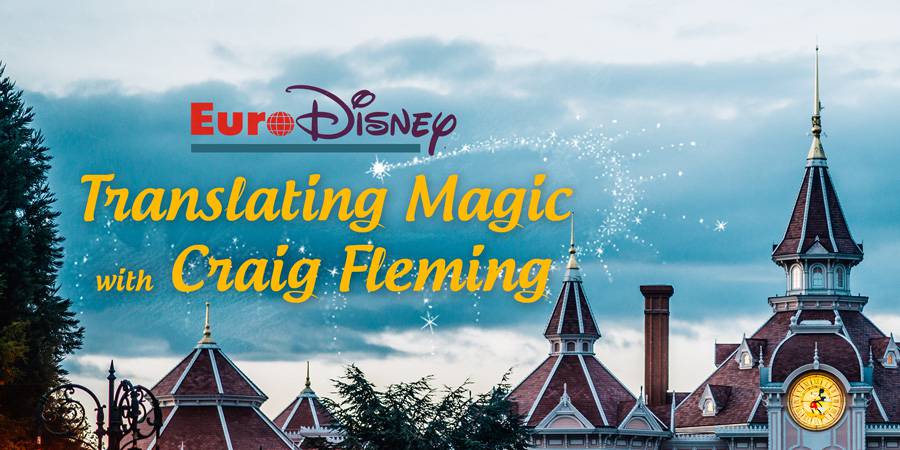 Kris Van de Sande
Kris Van de Sande When bringing Disneyland to Paris, one of the biggest obstacles Imagineers faced was language. We had a long talk Craig Fleming, the man responsible for translating that magic and about bringing Star Tours and the Disneyland park to France. Craig is an actor, director, writer, and teacher. He was the Senior Concepteur/Redacteur for Disneyland Paris between 1988 and 1994. Back then, he and his team were responsible for just about everything involving language, which in a French park includes about everything.
Kris: Hi Craig, to start, what was your job description?
Here’s a list of things that I did.
- Created nomenclature for attractions, shops and restaurants;
- Developed Show Support Graphics for Frontierland, Discoveryland, and Adventureland;
- Wrote treatment for Circle-Vision attraction;
- Relocated to Paris;
- Tried to learn French;
- Consulted on Euro Disney computer game;
- Developed scripting for Peter Pan, Pirates of the Caribbean, Star Tours, Pinocchio, Snow White, Phantom Manor, Alice’s Curious Labyrinth;
- Developed copy for stained glass windows and tapestries in castle;
- Assisted casting of vocal talent for Pirates of the Caribbean, Phantom Manor, Fantasyland dark rides, Alice’s Curious Labyrinth, Big Thunder Mountain, Star Tours, Mark Twain and Molly Brown steamboats, EDL Steam Train…
- Directed most attraction recording sessions;
- Wrote Boot Hill tombstones;
- Wrote detailed report on the status of writing effort;
- Wrote park dedication (signed by Michael Eisner);
- Developed and recorded all operational and safety spiels;
- Developed disclaimer policy.
That is quite impressive. Any favourites?
My two favourite attractions are Phantom Manor and Star Tours. Both are immersive adventures.
So part of your task was to create a French version of Star Tours.
Yes. But my briefing was clear and simple. Do not deviate from the original script! We had to copy the American version as close as possible. In fact, the first attraction we worked on was the Droidnostic Center. Thing is, it gave us quite a headache from day one. The opening line, in the first segment, was G2-9T waking up to say “These shutdown breaks are getting much too short”. Of course, it’s a blue collar joke by construction workers who always complain about their short coffee breaks. One of my translators, not knowing the context did a quite literal translation of his ‘freins’ (brakes), getting ‘shorter’ (length, not duration.). This of course was a great example that we needed to allow for a more creative translation.
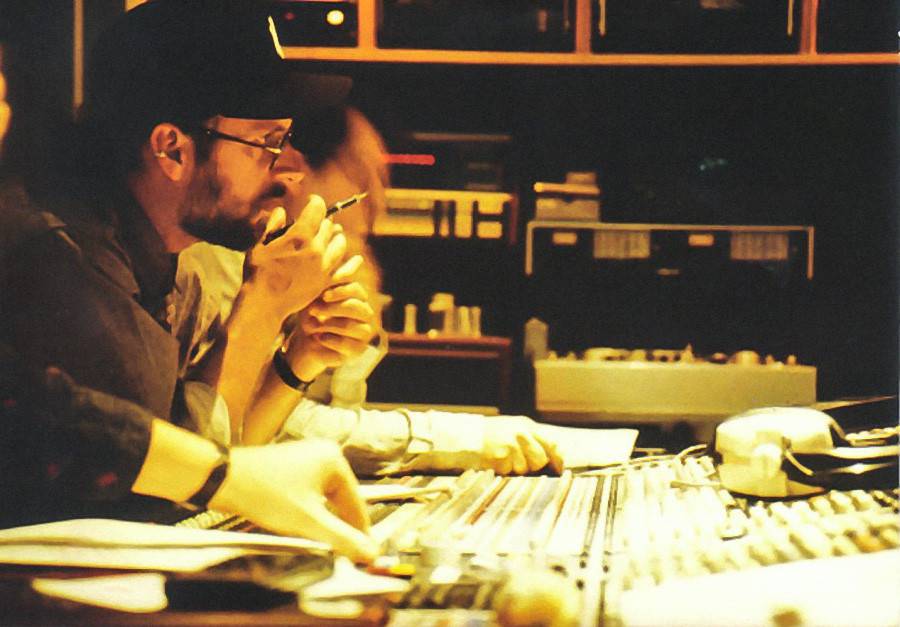
One thing that was fun was recording Anthony Daniels, C-3PO, because his French was terrific. Unlike the of recording Vincent Price in French for Phantom Manor, which we couldn’t keep because it was bad, Anthony was terrific. We recorded him at Abbey Road in London, and what was great was seeing him do the voice. He had to do the physicalisation of C-3PO to get the sound just right. Seeing him standing in the vocal booth, wearing button-down shirt, jeans, and looking very J.Crew, all while doing that physical stuff of C-3PO was really funny. It’s still his voice on the soundtrack of the show, right?
It is! And in fact, he still performs C-3PO for every TV-Show and game.
Great! He basically made a whole career out of it. But he also made the character what it is. George Lucas wasn’t sure at first, but Anthony convinced him with the strength of his performance, and he turned it into this lasting legacy. Almost an archetype.
We’ve had the pleasure of meeting Anthony before, and he knows what he wants, and he’s very vocal about it, which in the end gets a great result. Very nice guy.
We met him before the recording session at his London flat. He invited me and Thierry so we could go over the script in French, and he made us tea, and we had a sweet time. And then he came out for the opening of the park, so that was fun.
So, I take you are a Star Wars fan?
I saw the original Star Wars film on opening day, and I actually knew some people who have worked on the original film. I had a friend who had the matte for the Death Star Trench, before the movie even came it, hung over her bed, because she was dating Joe Johnston at the time. And my wife, who graduated from the USC School of Cinema-Television, went to see premieres and advance screenings for each of the three original films. So it’s a great universe, it’s a great story, and was always very well executed.
When riding Star Tours in French, my mind somehow switches to the English version, that I’ve never had the pleasure of experiencing, but know so well from audio recordings and our own script.
It’s funny that our mind sometimes works like that. There are certain phrases that have entered the culture, almost at a Shakespearean level. Which is why there’s such a radical difference between the original three films and the three prequels. The storytelling and the dialogue was so much better in the first three movies that they made
You can obviously tell the direction that Irvin Kershner took in The Empire Strikes Back.
Exactly, that’s why I feel The Empire Strikes Back is the best one. But I have high hopes for The Force Awakens. I saw the trailer, and it has a lot of potential to bring back the feeling that you got from the earlier movies.
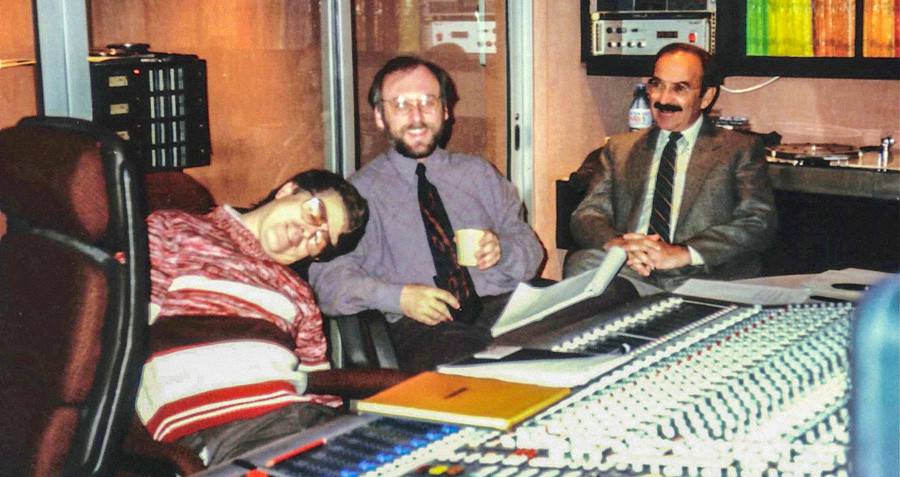
One of your main jobs was translating. How do you even start? Since there are about 15 languages in a 1000km radius around Paris.
Going into the project there where a number of Disney executives who didn’t exactly understand the full scope of that challenge. We did have our share of difficulties with various French agencies and politicians. But we also had our challenges with accommodating a polyglot audience. I don’t know what the demographics are now, but back then we expected a high percentage of francophones, followed by English speakers, followed by everyone.
We did not want the park to look like or feel like an international airport.
It just wasn’t acceptable to use multiple languages. So whenever possible the idea was to communicate visually, and this approach was consistent with the Imagineering concept of visual literacy. In fact, this principle guided the design of Phantom Manor.
The original Disneyland attraction, The Haunted Mansion, is a stately antebellum home. It carries certain connotations because of the American experience with gothic horror films, but it wouldn’t communicate the same to European audiences. For France, we knew the look of Phantom Manor must immediately convey the supernatural, so that’s why the house is decrepit. Throughout the Park we wanted to convey information visually and pictorially. I was frequently told that my copy was too long, that I had used too many words. So we had to make those adjustments and use fewer words.
That said, there were creative producers behind the attractions, and other things as well, who demanded certain amounts of verbal content, because that was “show” to them. And so there was a struggle between the people who created the attractions and those who understood that language at some times would be a hindrance. It was a constant struggle to balance those demands.
When they announce the parades and shows like Disney Dreams they announce in French, English, Spanish, Italian, Dutch and German.
I wouldn’t be surprised by these adjustments, but in some cases they actual diminish the show value. It’s remarkable because my little department, which was just me and five other writers, was responsible for written copy for the entire theme park, with a scope that included scripts, graphics, operational spiels, plus the entertainment center (Disney Village), plus the five hotels.
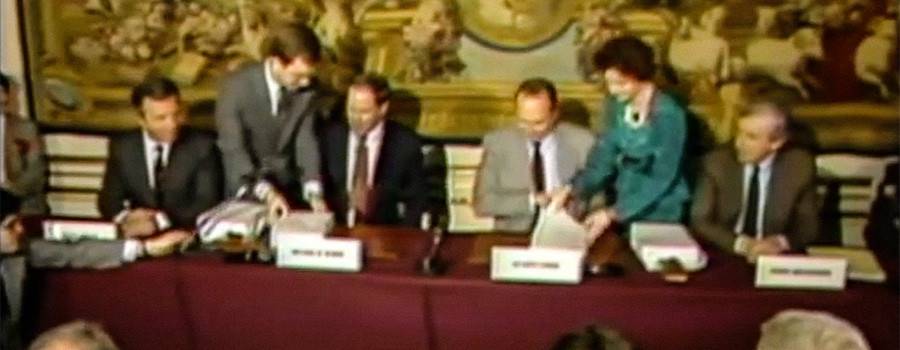
Also, our department was often the lighting rod for criticism leveled at the Park because of a misunderstanding about our use of language. There where only two small clauses governing our use of language in the gigantic legal document Disney had with the French government. The main principle granted Disney the right to choose language based on the needs of ‘show.’ Of course, for Disney everything is ‘show’. The door to the bathroom, that’s ‘show.’ What’s on the trashcans, that’s also ‘show’. French was the primary language of the Park. It was always meant to be. But we couldn’t put French names on buildings in Frontierland because that would kill the credibility of this three-dimensional movie set that we were trying to present.
Very interesting! Because part of the lore that gets passed around was that a certain part had to be French because of that document.
In France there are strict regulations governing language, but this legal document granted that Disney could accommodate certain needs based on theming.
Briefly we toyed with the idea, before the park opened, of naming all the attractions in Fantasyland in the language of the country in which the story originated.
So The Voyages of Pinocchio would be I Viaggi Di Pinocchio, Snow White’s Adventures, which now is Blanche-Neige et les Sept Nains, would be Schneewittchen Abenteur. In addition to the naming, we thought to create scripts that would be in German or Italian, or French, of course (Cinderella would remain Cendrillon). But we thought this would set a precedent that would have to be applied throughout the park, so we eliminated this “language of origin” policy. We kept with French and English.
That is a very good idea though! It really would add to the international character and feeling of that little village!
I thought so too. I advocated for the idea, but as always, there are battle to be won, and battles that you are destined to lose. That was one of them.
There was one battle that I lost that really frustrated me, and it had to do with the hotels. I believed that each of the five hotels should have a different designation. We had the Hotel New York, Sequoia Lodge, Newport Bay Club, and then there are the Hotel Cheyenne and the Hotel Santa Fe. I thought the Santa Fe is actually and thematically a motel, so it should be called Motel Santa Fe, and the Cheyenne is more like a fort. I thought with five different hotels, each representing different iconography, we should have five different identifiers.
They didn’t accept that, so unfortunately that idea and feeling of five distinct identities was lost.
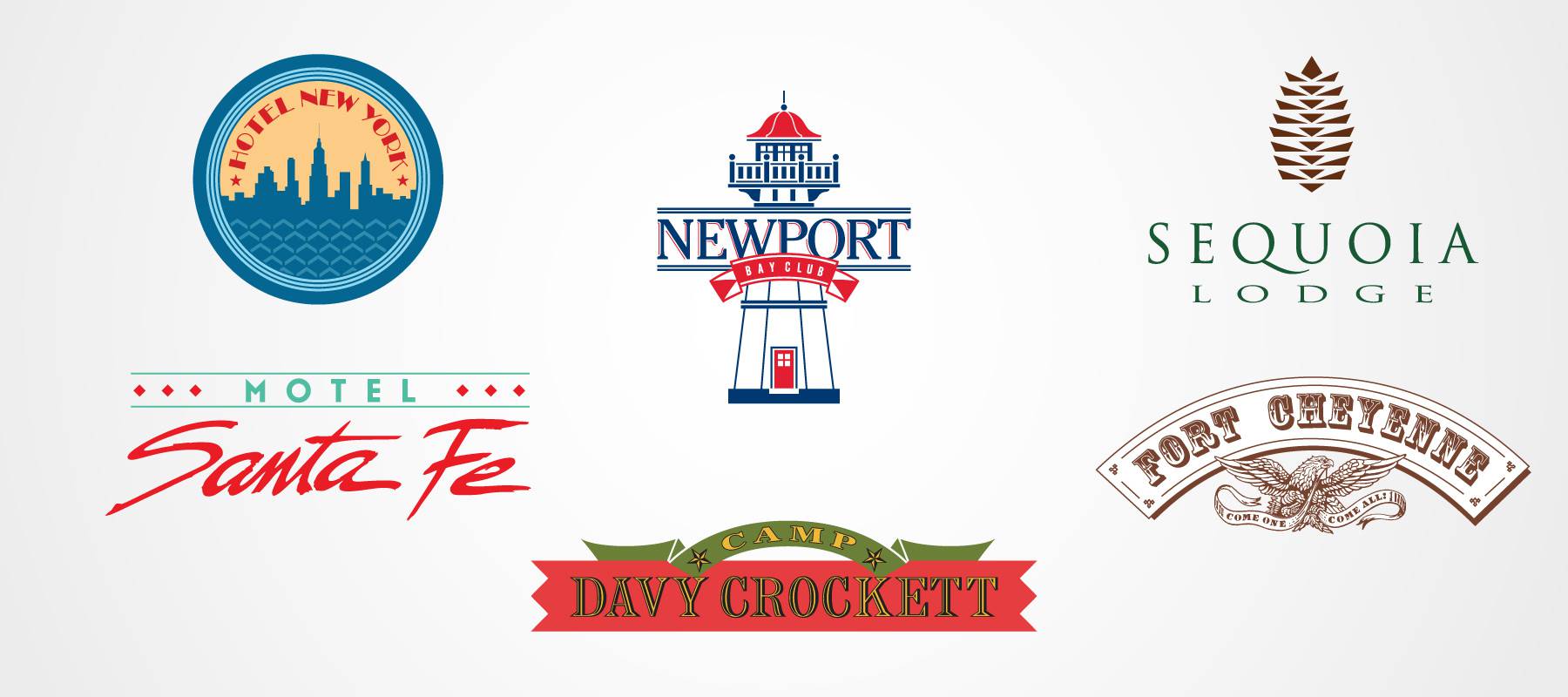
To bring that all back to Star Tours. We where very fortunate that the iconography of the films was so universal that we wouldn’t and shouldn’t have to adapt or make changes.
I remember having to ride the simulator all day for syncing the newly-installed voice and soundtracks, and to ride it non-stop seven, eight times in a row, on a cold winter day, was almost fatal.
We needed to adjust the audio balance, and it had to be done. To be honest, that was a horrible day. It was three months before opening, and they were working 24/7 on site. There was a terrible injury with one of the construction workers, just in front of Star Tours. Somebody’s legs had been crushed by a big crawler machine. It had just happened, and they had to call ‘le pompiers’ and other emergency personnel. I had to walk past this, and it was so difficult. We were all anxious, tired and overworked, so to go from that sad situation to being bounced around on seven non-stop rides was really tough.
Wow, that does sound intense. I knew several accidents happened during construction, but never knew it was in front of Star Tours.
A welding accident occurred just outside my office, in a small warehouse. There were a number of accidents, because there was such a flurry of work activity to get the park done in time for opening on time. But it did, we opened on time.
Do you have any favourite moments creating the show?
What’s fun with the entire attraction, is that it has such a consistent level of entertainment value, from your first encounter with it, through the end, and the thrilling John Williams score as you leave. I remember riding in the simulator in a giant metal shed on the parking lot at Walt Disney Imagineering. Also, standing outside of it, seeing how it moved. It’s really surprising to see how much it dips back when creating the illusion of acceleration. It’s really a brilliant effect.
Star Tours as we know it is coming to an end. We will have two more years to enjoy it, before it will be updated to the new Star Tours: The Adventures Continue. What are your feelings on this?
It’s funny because I grew up with Disneyland. My first job was as a character in the Disney parades at Christmas. I was 14. And the fact that it’s the park that Walt himself walked through. So any changes to Disneyland have always come at a price. When I rode the new Star Tours, I’ll admit, I missed the original version. And when the original Star Tours replaced Adventures Thru Inner Space, which was one of my favourite attractions of all time, I was little bummed. But Star Tours was just so cool, I got over that.
It’s a shame that this is the last original version of the attraction, and that it will be gone. But that is how they do things now. You know, there’s a fine line between keeping it a museum of the original ideas and staying current with technology and audiences. It’s still a business, and the changes that are still to come here at Disneyland are going to be radical in some ways.
Disneyland Paris was the last time they could spend that much money. It is the most detailed. It is in some areas extravagant because all of the show producers where trying to outdo the other parks. And they where allowed. I don’t know how it works now, but back then it was the apex of their achievements in design. Just beautiful flourishes in this really beautiful park.
Since you lived in Paris during construction, did you experience much of the protest by the francophones?
There where actually some protest at the parks in the first few weeks before we opened. I also was very aware of the French theatre director, Ariane Mnouchkine, and her claim that the project was “a cultural Chernobyl”. I was collaborating with Jean-Claude Carrière on a script for Discoveryland, and he introduced me to her. I was very excited to meet her, because I had a background in theater, but she wasn’t very excited to meet me, because I was part of the “Disney Invasion”. The French are very protective of their language. So in the end, realising that I would never speak French good enough, I stopped trying, and spent more time with the Irish.
Understandable, the first thing we learned in French was “it’s not a computeur, but une ordinateur”. They keep their language pure.
I do love that English is a language that grows, expands, and absorbs. But the French actively restrict any kind of growth in their language. It’s a great language, but it can profit from new ideas.
It’s a debate of course, and again, that made us show writers very anxious, because we were the obvious front when it came to an invasion of cultural and commercial values. They attacked us through language.
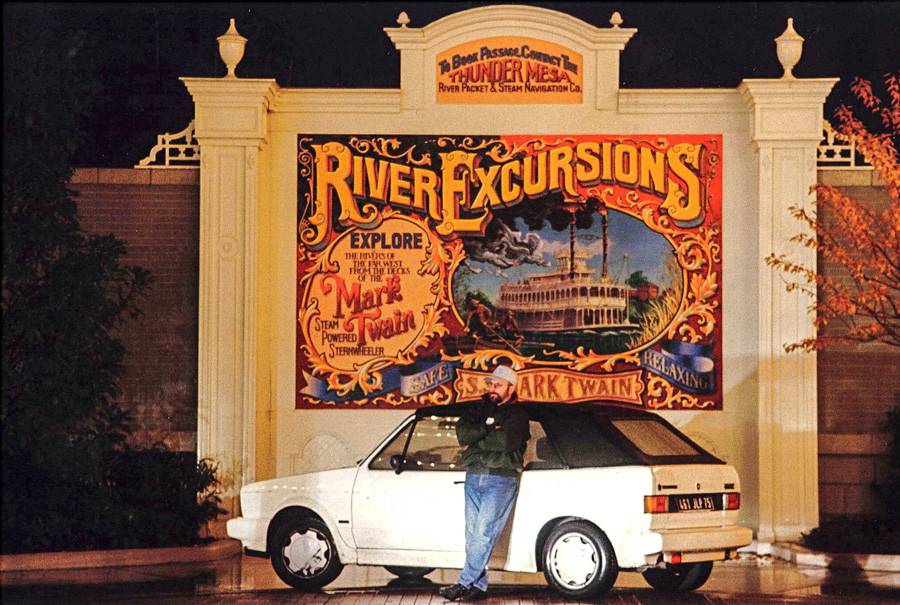
In fact it was hard to keep our own company consistent. We would have divisions of the company write Euro-Disneyland with a hyphen. The Foods division had a number of beautiful porcelain china table services created, and on the bottom they had Eurodisneyland as a single word. They had spent thousands of dollars to do this. I create a style guide, which still wasn’t consulted enough, for all the parts of the company because they didn’t take our own nomenclature seriously enough.
Just before opening I had to go up and down Main Street to make sure that people hadn’t made their own commemorative second story Main Street Windows, because there was a lot of that going on.
I was told that I could go up to everybody, even if they were a vice-president, and say “that window is coming down because you don’t have Eisner’s approval. It all goes through me, and that that’s not part of our graphics scope.” I even had a hard hat that somebody made for me, and on the back it showed Huey, Dewey, and Louie with a thought bubble above their heads which read “it says what?!” There where things creeping in all over the park that were either mistakes, or things deliberately added by somebody. Someone in Florida decided that the fuel tank of the Hyperion, the giant airship in the Videopolis, should say FUEL in big giant block letters. But the thing is, it’s not an American airship! It’s French, it would never say “fuel.” But some people thought that words could be added or subtracted at their discretion. These are the things that caused me to age prematurely on the project.
Did you enjoy writing for Disneyland, despite the hard moments?
Well, I recently wrote a script for the actress who played Doctor Beverly Crusher on Star Trek: The Next Generation. She’s doing a fundraiser soon, so I wrote it featuring her character in a completely different context. But that’s kinda what we did at Disney. There are so many different things that you have to do, know, and feel—from things like Adventureland and its 1930s explorers, to the fairytales that inhabit Fantasyland, to the legends of Old West. I loved working on Frontierland, because I really got into that research. It was fun to have the opportunity to write in so many styles, for so many areas and times. That was the best part of the job.
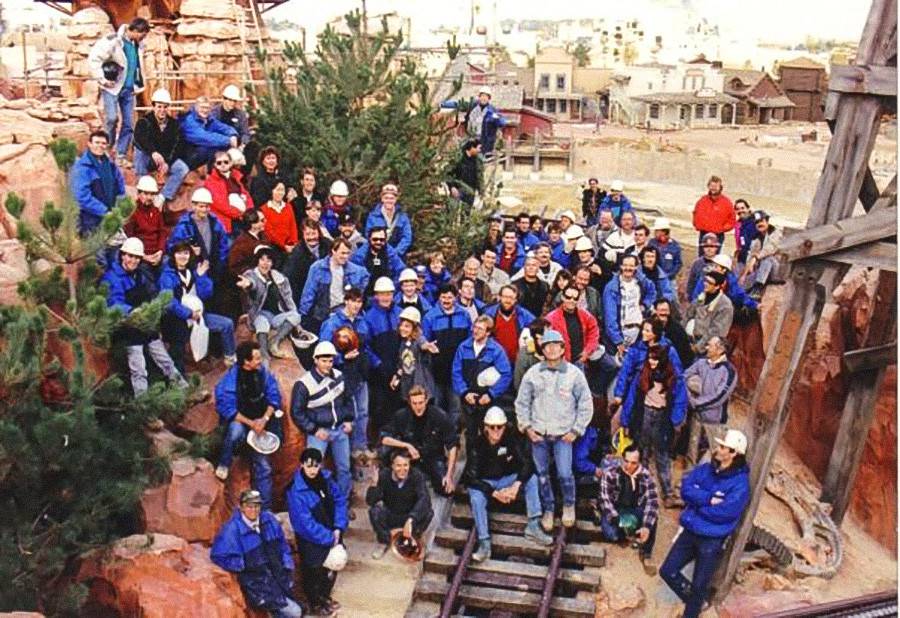
Any plans to visit Disneyland Paris again after all these years?
In fact, I am planning to visit France in 2016 with my family, so we might try and visit the park.
Do you look forward to walk back on Main Street, but as a guest?
I appreciate it when anyone, anywhere, treats me as a guest.
Final Question: What will be your first ride?
Star Tours, of course. You don’t believe in a column entitled ENDOR EXPRESS I could have any other answer?
Thank you so much for your time Craig!